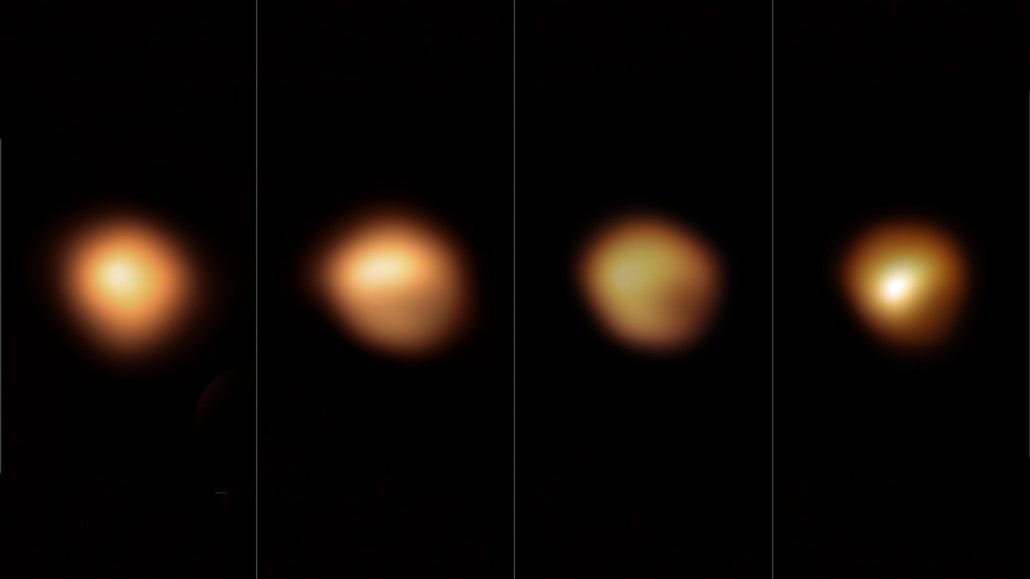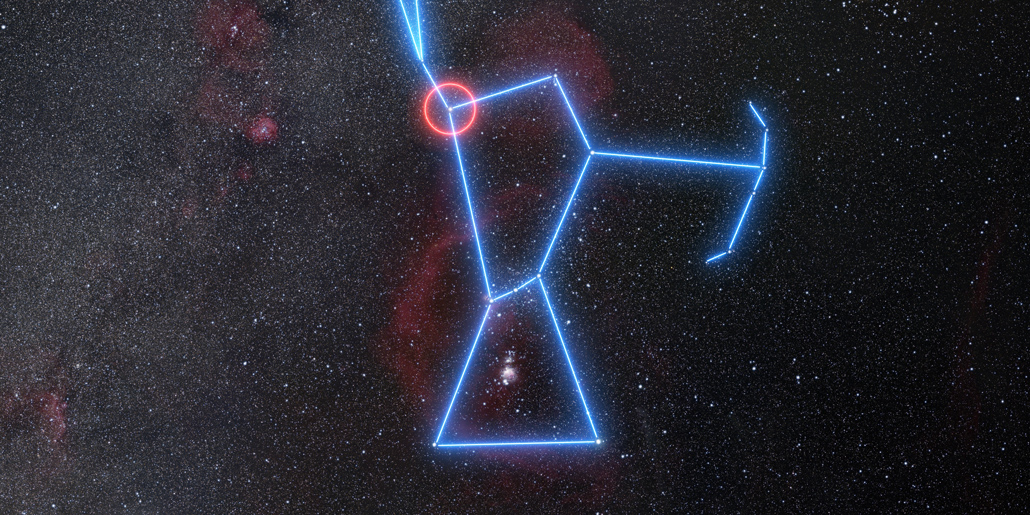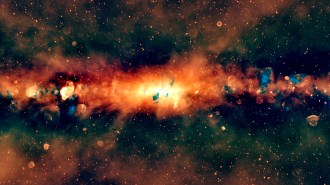Dust and a cold spell on Betelgeuse could explain why the giant star dimmed
Scientists may finally have an explanation for the star’s weird 2019 behavior

These images show Betelgeuse before and during its Great Dimming, as seen by the Very Large Telescope in Chile. From left to right, the pictures were taken in January 2019, December 2019, January 2020 and March 2020. The star grew darker over its southern hemisphere. By April 2020, it had returned to normal.
M. Montargès et al., ESO
- More than 2 years ago
Astronomers around the world were startled in late 2019 when Betelgeuse, one of the brightest stars in the sky, grew dark for several months. Rumors swirled that the star was about to go supernova. It didn’t. But debate over what was going on exploded. Now, newly released images taken before and during the “Great Dimming” suggest what happened: The star’s surface cooled and triggered a cloud of dust that temporarily blocked its light.
“This is the best interpretation we can get with the data that we have … without flying our spaceship to Betelgeuse and seeing what’s going on there,” says astrophysicist Emily Cannon of KU Leuven in Belgium.
Cannon and colleagues used the SPHERE instrument on the European Southern Observatory’s Very Large Telescope in Chile to take snapshots of Betelgeuse for more than a year. Serendipitously, the team had captured an image of the star in January 2019, months before the dimming began, and could compare that image with others taken in December 2019 and January and March 2020.
The dimming wasn’t spread uniformly across Betelgeuse’s surface, the team reports June 16 in Nature. A dark splotch was concentrated over the star’s southern hemisphere. The researchers then ran computer simulations of the star, which included incorporating how dynamic gas bubbles constantly churn beneath its surface, to figure out the likeliest explanation for the way that the dimming played out.
Earlier observations of the star had split astronomers into two camps (SN: 11/29/20). One group thought that a cloud of dust had blocked Betelgeuse’s light (SN: 3/12/20). Another thought that there wasn’t enough evidence of dust, and the dimming was due to temporary cooling at Betelgeuse’s surface.

Astrophysicist Miguel Montargès says that now that he’s seen his team’s data, he’s in both camps. “The most natural conclusion is that both events happened,” says Montargès, of the Paris Observatory.
The team’s hypothesis is that in late 2019, a temporary cold patch formed in Betelgeuse’s southern hemisphere due to the normal churning of surface plasma, and that cooling caused the star’s light to dim. The cold patch then allowed gas that had been released from the star’s surface to cool enough to form dust particles, which further blocked the star’s light.
“You start getting a runaway effect,” which makes it easier for more dust to form, says astrophysicist Emily Levesque of the University of Washington in Seattle, who was not involved in the research but wrote a commentary in the same issue of Nature. As the dust spread out, the starlight shone through again.
Some astronomers are still unconvinced that dust is part of the answer. The images plus simulations don’t prove dust was there, says astrophysicist Thavisha Dharmawardena of the Max Planck Institute for Astronomy in Heidelberg, Germany. “This discussion will continue till we obtain direct evidence for dust,” says Dharmawardena, who has looked for — and failed to find — signs of dust during the Great Dimming.
Sign up for our newsletter
We summarize the week's scientific breakthroughs every Thursday.
Montargès thinks the dust was just hard to see using other techniques. “When people say they are not seeing new dust, I think they are wrong,” he says. “It’s that their data does not allow them to see it.”
Both researchers agree that the Atacama Large Millimeter Array in Chile could break the stalemate. That telescope was out of commission last summer due to the COVID-19 pandemic, when its observations would have been most useful. More observations are scheduled for this summer, and if dust is still there, ALMA should see it.
Still, “if we cannot identify it, it’s not because it’s not there,” Montargès says. “It’s because we are too late.”
The Betelgeuse observations may help astronomers recognize similar dimming events in other stars, Levesque says. Betelgeuse is Earth’s closest red supergiant star, a late phase of the stellar life cycle that comes before a supernova explosion. While dust does not predict an explosion, it can be part of how these stars lose mass before they die.
So when will Betelgeuse go out with a bang? “Not today,” Montargès says. “Every day, we are closer to the explosion, that’s for sure. I think it’s not tomorrow, or even in our lifetime, for Betelgeuse.”




